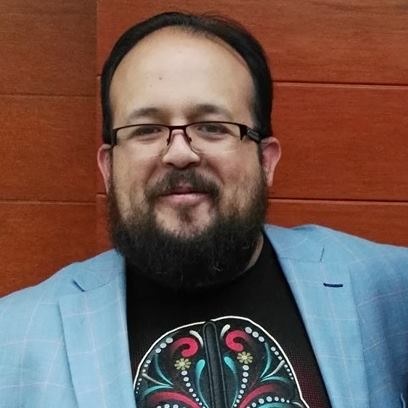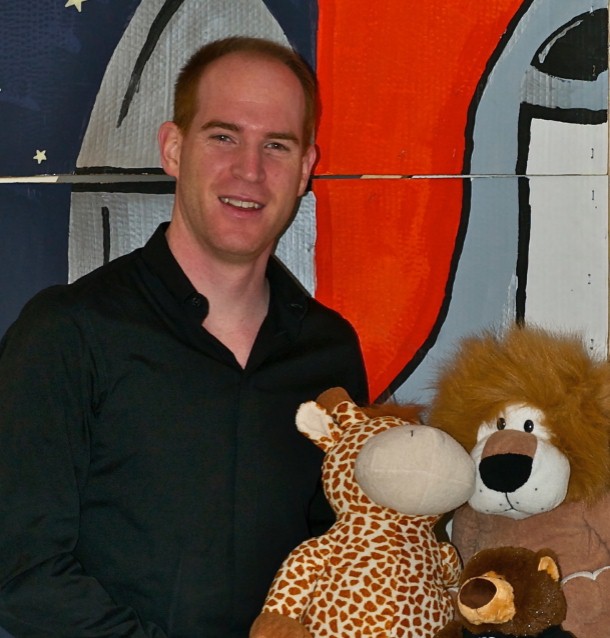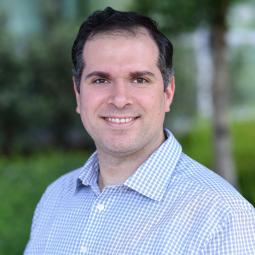Keynote speakers
 Alfonso Gastelum
Alfonso Gastelum
Dr. Gastelum graduates from the University of Guadalajara, México with a degree in Physics and later completed his Master's studies at the National Autonomous University of Mexico in the area of Medical Physics where he completed his first studies in the modeling of biological tissue. In 2012 he concluded his PhD in Computer Science at The University of Auckland, in New Zealand. After his PhD studies He joined the laboratory "IVS - New Zealand" where he carried out private development projects in the area of Computer Vision. He made a postdoctoral stay in the LTHE laboratory in Grenoble, France, where he developed new methods and algorithms for the simulation of micro flows in porous media. Currently he is part of a research group at the General Hospital of Mexico, the UIDT-ICAT, and head of the BIOCOMLAB laboratory where he continues working on computer simulation for surgical training and tissue studies, morphological studies of multi spectral data and big data analysis of complex populations.
 Sean Deoni
Sean Deoni
Dr. Sean Deoni is an associate professor of pediatrics (Research) in Brown University. He recevied a BSc. In Medical Biophysics in 1999 from the University of Western Ontario. In 2004 he obtained his PhD in Medical Biophysics at University of Western Ontario. From 2014 to 2016 Dr. Deoni worked as Director of Pediatric Radiology Research at Children’s Hospital Colorado and was an Associate Professor of Radiology in the University of Colorado. Dr. Deoni is the director of MRI Research in the department of Pediatrics in Memorial Hospital of Rhode Island and an Adjunct Professor of Engineering in the School of Engineering of Brown University. Dr. Deoni’s research focuses on developing and applying magnetic resonance imaging (MRI) techniques to study early brain development. His current studies involve following the process of myelination in healthy infants and toddlers in relationship to behavioural development and exploring the varied environmental and genetic influences that shape these brain-behaviour relationships.
 Enrico Grisan
Enrico Grisan
Dr Grisan graduated from Padova University as an Electrical Engineer in 2000 and finished his PhD in Bioengineering in 2004 at Padova University, in cotutelage with City University (London). He was a post-doc fellow at the Department of Information Engineering of the University of Padova, where he is assistant professor since 2008. His main research activities involve the automatic processing and analysis of medical images, either for extracting quantitative biomarkers of disease or for the development of computer aided diagnostic systems. He has worked in the development of methods for the processing and analysis of retinal and corneal images, the virtual histology from confocal endomicroscopy images, the detection and quantification of cortical lesion from multispectral brain MRI data, among other subjects. He is member of the IEEE-EMBC Technical Committee on Biomedical Imaging and Image Processing
 Armin Schwartzman
Armin Schwartzman
Dr. Schwartzman graduated from Technion - Israel Institute of Technology, Electrical Engineering in 1995. He obtained his MSc in Electrical Engineering at the California Institute of Technology in 1996. He finished in 2006 the PhD program in Statistics at Stanford University. Dr. Schwartzman's research involves development of statistical methods for signal and image analysis, with biomedical and environmental applications. From June 2012 t Dr. Schwartzman has worked as Principal Investigator in the Project “Multiple testing methods for random fields and high-dimensional dependent data”. Among the interests of Dr Schwartzman are: Signal and image analysis; functional and manifold-valued data; high-dimensional data; modern multivariate statistics; large scale multiple testing; and applications in biomedicine and the environment. Nowadays, Dr. Schwartzman is an Associate Professor in Residence of the University of California in the department of Family Medicine and Public Health.
 Alan Evans
Alan Evans
Dr. Evans obtained a B.Sc. in Physics at Liverpool University (1974), an M.Sc. in Medical Physics at Surrey University (1975) and a Ph.D. studying structure-function interaction of proteins at the Department of Biophysics at Leeds University in the U.K.(1979). Subsequently he worked for five years as a PET physicist at Atomic Energy of Canada in Ottawa. He is a James McGill Professor of Neurology and Neurosurgery, Psychiatry and Biomedical Engineering at McGill University since 2009, and a researcher in the McConnell Brain Imaging Centre (BIC) of the Montreal Neurological Institute. Presently, Dr Evans is co-director of the Ludmer Centre for Neuroinformatics and Mental Health and is Principal Investigator of CBRAIN, a pan-Canadian project to integrate Canadian brain research with the Compute Canada high-performance computing grid. Dr. Evans heads the Data Coordinating Center for a large NIH multi-centre MRI study of normal pediatric development. Dr. Evans' research interests include cognitive neuroimaging, neuroanatomical variability, and image-processing methodologies for PET and MRI. He pioneered the technique of multi-modal 3D brain imaging with PET and MRI, which provides detailed 3D images of brain anatomy.
 Matt Lallas
Matt Lallas
Dr. Lallas graduated from The Chicago Medical School at the Rosalind Franklin University of Medicine and Science in North Chicago, Illinois. He then came to CHLA where he completed two years of pediatric residency and three years of child neurology residency. He left to do a two year Neurophysiology fellowship at Miami Children's Hospital in Miami, Florida. Dr. Lallas is clinical Assistant Professor of Pediatrics (Clinician Educator) in Keck School of Medicine of USC. Dr. Lallas' clinical interests include reading inpatient and outpatient EEG and VEEG and EMU Coverage, outpatient clinic, specializing in epilepsy, surgical epilepsy and intractable epilepsy.